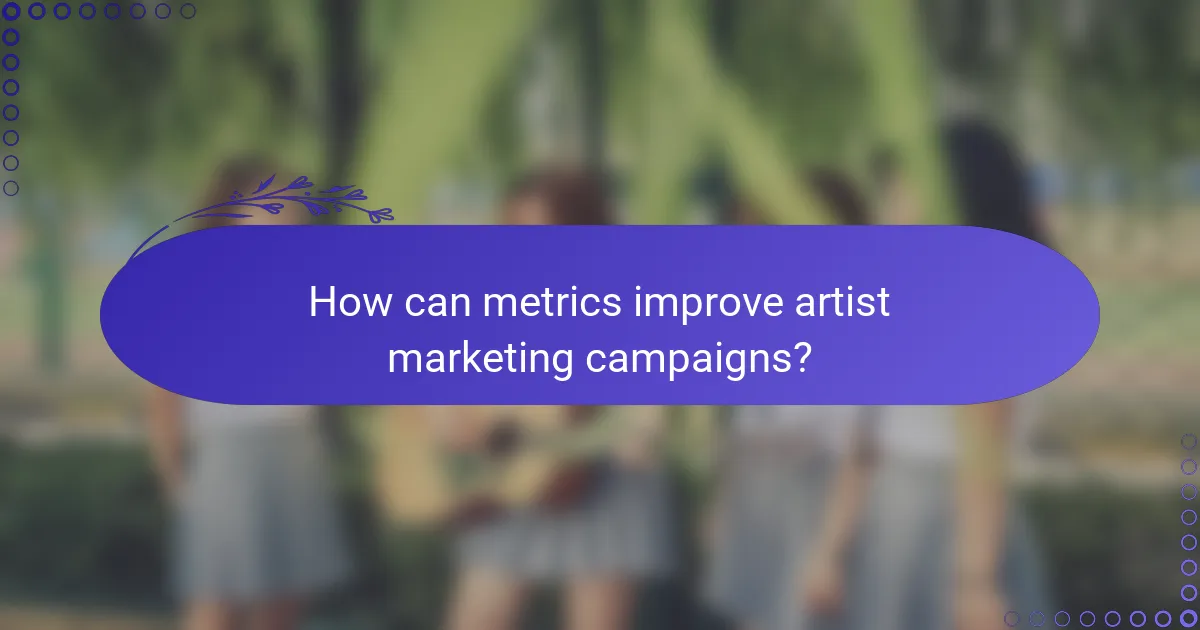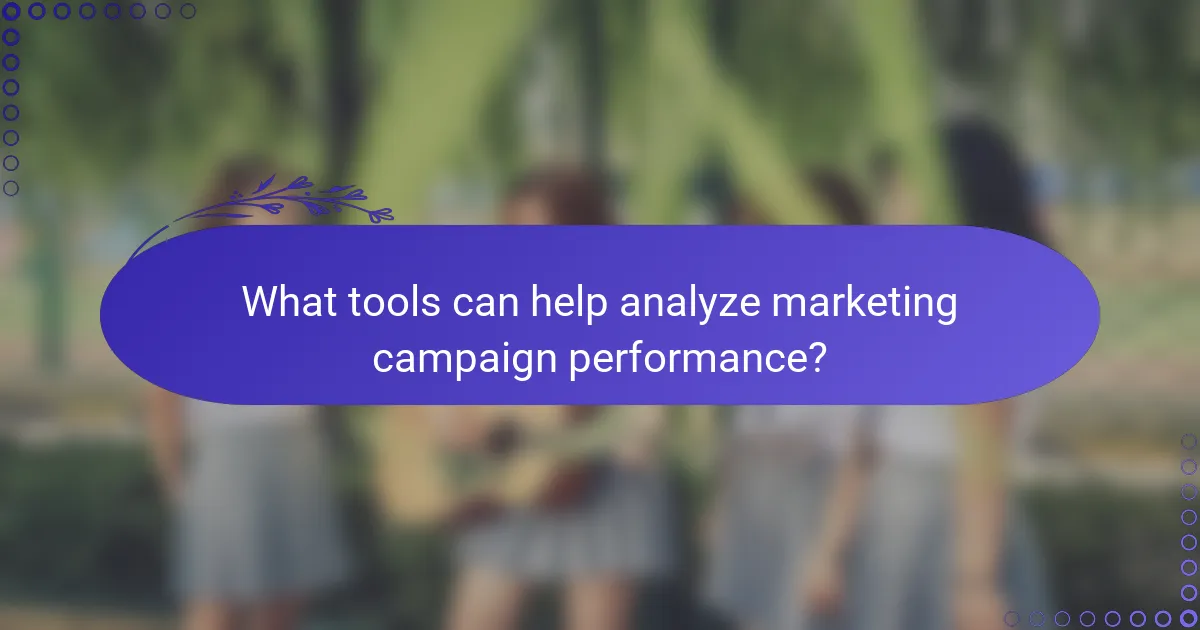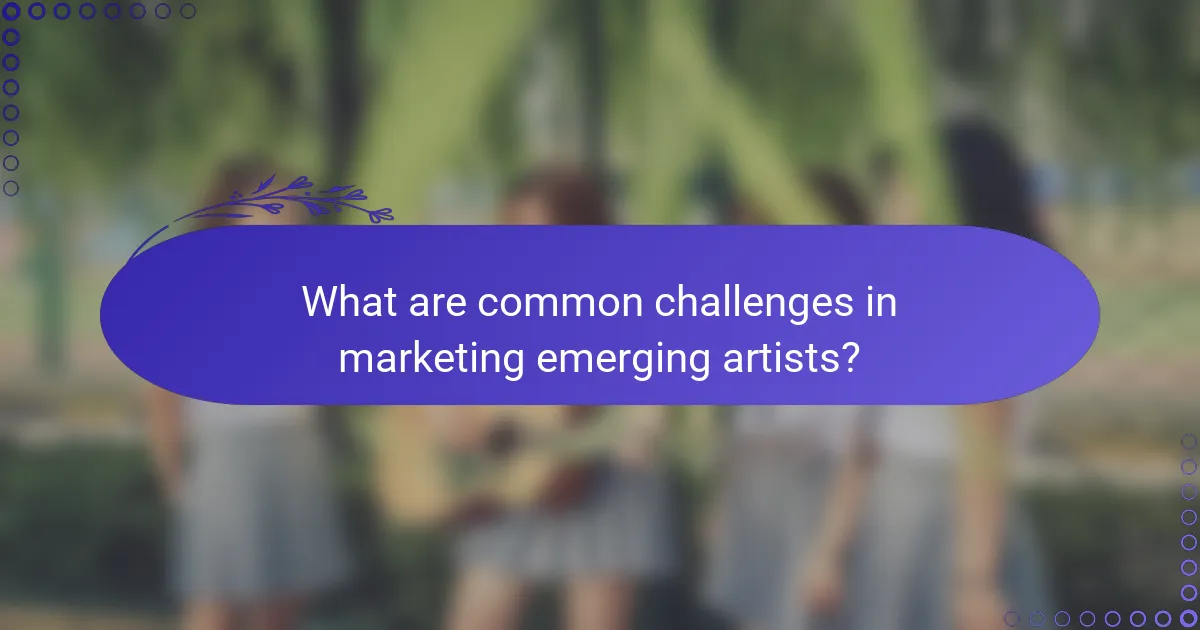In the competitive landscape of the music industry, emerging artists must adopt effective marketing strategies to build their visibility and connect with audiences. By leveraging social media, collaborating with influencers, and utilizing targeted advertising, artists can enhance their engagement and reach. Analyzing key performance metrics further refines these strategies, ensuring that marketing efforts are data-driven and impactful.

What are effective marketing strategies for emerging artists in the US?
Effective marketing strategies for emerging artists in the US include leveraging social media, collaborating with influencers, utilizing targeted advertising, engaging in live performances, and executing email marketing campaigns. These approaches help build visibility, connect with audiences, and drive engagement.
Social media engagement
Social media engagement is crucial for emerging artists to connect with their audience and showcase their work. Platforms like Instagram, TikTok, and Facebook allow artists to share content, interact with fans, and build a community around their brand.
To maximize engagement, artists should post regularly, use relevant hashtags, and respond to comments. Creating visually appealing content, such as behind-the-scenes videos or live Q&A sessions, can also enhance interaction and attract new followers.
Collaborations with influencers
Collaborating with influencers can significantly boost an emerging artist’s visibility. Influencers often have established audiences that trust their recommendations, making them valuable partners for promoting music or art.
When seeking collaborations, artists should look for influencers whose values align with their own and who have an engaged following. This can include co-hosting events, creating joint content, or having influencers feature the artist’s work on their platforms.
Targeted display advertising
Targeted display advertising allows emerging artists to reach specific demographics through online ads. By using platforms like Google Ads or social media advertising, artists can tailor their campaigns to target potential fans based on interests, location, and online behavior.
To ensure effectiveness, artists should define their target audience clearly and create compelling ad content that resonates with them. Monitoring ad performance and adjusting strategies based on analytics can help optimize results and improve return on investment.
Live performances and events
Live performances and events are powerful marketing tools for emerging artists to showcase their talent and connect with fans. These events can range from small local gigs to larger festivals, providing opportunities for direct engagement.
Artists should consider partnering with local venues or participating in community events to increase their exposure. Promoting these performances through social media and email newsletters can help draw in larger crowds and create buzz around their brand.
Email marketing campaigns
Email marketing campaigns enable emerging artists to maintain direct communication with their audience. By building an email list, artists can share updates, new releases, and exclusive content with their fans.
To create effective email campaigns, artists should segment their audience based on interests and engagement levels. Personalizing emails and including clear calls to action, such as links to new music or upcoming shows, can enhance engagement and drive conversions.

How can metrics improve artist marketing campaigns?
Metrics enhance artist marketing campaigns by providing data-driven insights that inform strategies and decision-making. By analyzing key performance indicators, artists can refine their approaches, target the right audiences, and ultimately boost their visibility and engagement.
Tracking audience engagement
Tracking audience engagement involves measuring how fans interact with an artist’s content across various platforms. Metrics such as likes, shares, comments, and time spent on posts are crucial for understanding what resonates with the audience. Regularly reviewing these metrics helps artists tailor their content to maintain and increase engagement.
Utilizing tools like Google Analytics or social media insights can provide a comprehensive view of audience behavior. For example, if a particular type of post garners significantly more engagement, artists should consider producing similar content to capitalize on that interest.
Measuring conversion rates
Measuring conversion rates is essential for assessing the effectiveness of marketing campaigns in turning audience engagement into actionable outcomes, such as ticket sales or merchandise purchases. A conversion rate is calculated by dividing the number of desired actions taken by the total number of visitors or interactions.
For instance, if an artist’s website receives 1,000 visitors and 50 make a purchase, the conversion rate is 5%. Artists should aim for higher conversion rates by optimizing their calls to action and ensuring a seamless user experience on their platforms.
Analyzing social media reach
Analyzing social media reach helps artists understand the extent of their content’s visibility across platforms. Reach metrics indicate how many unique users have seen a post, which is vital for gauging the effectiveness of promotional efforts. A higher reach often correlates with increased brand awareness and potential fan growth.
Artists can enhance their reach by using targeted advertising and engaging with followers through comments and shares. Regularly reviewing reach data allows artists to adjust their strategies and focus on platforms that yield the best results.
Evaluating ad performance
Evaluating ad performance is crucial for determining the return on investment (ROI) of marketing campaigns. Key metrics include click-through rates (CTR), cost per click (CPC), and overall engagement generated from ads. By analyzing these figures, artists can identify which ads are most effective and allocate their budgets accordingly.
For example, if an ad campaign targeting a specific demographic shows a high CTR but low conversion rates, it may indicate that while the ad is attracting attention, the landing page needs improvement. Regularly testing and refining ad strategies can lead to better performance and increased sales.

What are the key success factors for artist marketing?
The key success factors for artist marketing include understanding the target audience, maintaining consistent branding, creating quality content, and effectively allocating the marketing budget. These elements work together to enhance visibility and engagement, ultimately driving an artist’s career forward.
Understanding target audience
Identifying and understanding the target audience is crucial for effective artist marketing. This involves researching demographics, preferences, and behaviors to tailor marketing strategies that resonate with potential fans.
Utilize social media analytics and surveys to gather insights about your audience. This data can help refine messaging and promotional efforts, ensuring they align with the interests of your followers.
Consistent branding
Consistent branding helps establish a recognizable identity for the artist. This includes visual elements like logos, color schemes, and fonts, as well as the tone and style of communication across all platforms.
Ensure that all marketing materials, from social media posts to merchandise, reflect a unified brand image. This consistency builds trust and familiarity, making it easier for fans to connect with the artist.
Quality content creation
Creating high-quality content is essential for engaging the audience and promoting the artist’s work. This can include music releases, videos, behind-the-scenes footage, and interactive posts that encourage fan participation.
Focus on originality and authenticity in content creation. Regularly updating content can keep the audience engaged and interested, leading to increased shares and visibility across platforms.
Effective budget allocation
Effective budget allocation is vital for maximizing the impact of marketing efforts. Artists should prioritize spending on areas that yield the highest return on investment, such as social media advertising, collaborations, and promotional events.
Consider setting aside a percentage of revenue for marketing, typically around 10-20%, to ensure a steady flow of resources for promotional activities. Regularly review and adjust the budget based on performance metrics to optimize spending.

What tools can help analyze marketing campaign performance?
Several tools can effectively analyze marketing campaign performance, providing insights into user engagement, conversion rates, and overall effectiveness. Utilizing these tools allows emerging artists to refine their strategies and optimize future campaigns based on data-driven decisions.
Google Analytics
Google Analytics is a powerful tool that tracks website traffic and user behavior. It provides insights into how visitors interact with your site, including which pages they visit, how long they stay, and where they come from.
To make the most of Google Analytics, set up goals that align with your campaign objectives, such as newsletter sign-ups or merchandise purchases. Regularly review the data to identify trends and adjust your marketing strategies accordingly.
Facebook Insights
Facebook Insights offers detailed analytics for your Facebook page, helping you understand audience demographics, engagement levels, and post performance. This tool is essential for artists looking to gauge their social media impact.
Utilize Facebook Insights to determine which types of content resonate most with your audience. Monitor metrics like reach, likes, shares, and comments to refine your content strategy and increase engagement.
Hootsuite Analytics
Hootsuite Analytics provides a comprehensive overview of your social media performance across multiple platforms. This tool aggregates data from various channels, allowing you to analyze overall engagement and reach.
Use Hootsuite to create custom reports that highlight key performance indicators relevant to your campaigns. This can help you identify successful strategies and areas needing improvement, ensuring your marketing efforts are effective.
Mailchimp reports
Mailchimp reports offer insights into email marketing campaigns, including open rates, click-through rates, and subscriber engagement. This tool is particularly useful for artists who rely on newsletters to connect with their audience.
To enhance your email campaigns, analyze the performance of different subject lines and content types. A/B testing can help you determine what resonates best with your subscribers, leading to improved engagement and conversion rates.

What are common challenges in marketing emerging artists?
Emerging artists often face significant challenges in marketing due to limited resources, intense competition, and the need to establish a unique identity. These factors can hinder their visibility and growth in a crowded marketplace.
Limited budget
A limited budget is a primary challenge for many emerging artists, restricting their ability to invest in marketing strategies that can effectively promote their work. This often means relying on low-cost or free marketing channels, such as social media platforms, which require time and effort to build a following.
To maximize impact with a constrained budget, artists should focus on targeted marketing efforts. Collaborating with local venues or participating in community events can provide exposure without significant financial investment. Additionally, utilizing email marketing and engaging with fans through newsletters can help maintain interest and build a loyal audience.
High competition
The music and art industries are saturated with talent, making it challenging for emerging artists to stand out. High competition necessitates a clear and compelling brand identity that resonates with potential fans and distinguishes the artist from others in the field.
To navigate this competitive landscape, artists should conduct thorough market research to identify their unique selling points. Engaging storytelling, consistent branding across platforms, and leveraging niche markets can enhance visibility. Networking with industry professionals and collaborating with other artists can also provide valuable opportunities for exposure and growth.
